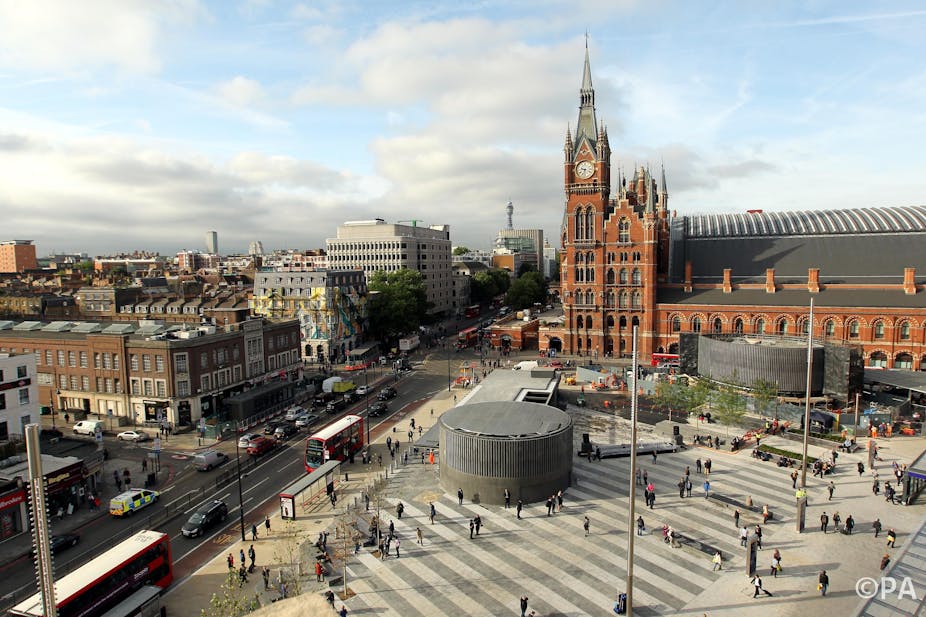Ken Livingstone and Boris Johnson, London’s two elected mayors, may have their differences but both have pursued a strongly market-driven, growth-centric agenda in the capital.
Boris’ second term in particular has featured a number of huge urban redevelopment schemes, including Nine Elms, Brent Cross, E20 (around the Olympic Park) and, most recently, the Earls Court Masterplan.
Common to all these schemes is an almost total reliance on the private sector to deliver the actual development. In most cases, the vision for a project is also largely a product of the private developer; a situation shared by high profile projects in other cities around the UK, such as New Islington in Manchester, Brindleyplace in Birmingham, or Liverpool One.
This quintessentially neoliberal approach begs the question of whether the public goods delivered by these schemes are as “good” or as “public” as we would like.
Many urban designers criticise the privileged position the market has been given in policy and practice. They are particularly animated about the idea that the public spaces of the city are becoming increasingly commercial and well-secured. That they are being shaped by the narrow interests of the few at the expense of the many. Too often, they say, urban redevelopment is a case of developers versus society.
Public spaces, public goods
But in my own recent research into London’s contemporary public spaces, I found these doom-laden assessments to be far from the mark. My research revealed that the new and regenerated public spaces of the city have found a diverse body of users who greatly value them; meanwhile, the creators of these spaces (both public and private) typically share an aspiration to deliver long-term social, economic and environmental value.
The sheer range of public spaces in London matches the diversity of the city itself. Every space need not necessarily cater for every public purpose or section of society. This is a quality shared by other large cities both in the UK and internationally.
Meanwhile, society has increasingly demanded more and better quality public spaces, but has not always been willing to manage those spaces from the public purse. Instead, high-quality public space is increasingly viewed as a critical value-adding asset for private developments – a model that harks back to the provision of the garden squares in 18th century London, spaces that while originally private, have since become “public goods”, either by being transferred to public ownership, otherwise opened to the public, or simply viewed by passers by for their aesthetic value.

A partnership of interests
Reacting to these trends, some critiques of contemporary urban design are clearly ideologically motivated. These perspectives over-simplify the situation by equating private development only with profiteering and a disregard for social context, and see public sector attempts to imitate the best of private sector practices as little better.
My research, on the contrary, showed how such arguments ignore the very clear economic incentive for private interests to deliver high-quality and sustainable spaces. They also miss how professionals that have typically nurtured schemes over many years will more often than not seek to create something of real lasting value.
The reality is also that even in the most complex of contemporary urban development schemes, the private sector rarely acts in isolation. In fact these schemes, and the spaces they contain, are shaped by complex partnerships between a wide range of players – public, pseudo-public and private. As such, sweeping generalisations about the motives of development interests are likely to be misconceived.
Fundamentally, helping people feel safe and secure and providing commercially vibrant environments to enjoy is of great value to society. There is nothing inherently immoral about such spaces being privately owned and managed. Indeed, the private and pseudo-private processes of space creation today are simply contemporary versions of opportunities that such interests have always found in London.
As such, unless there is a radical shift in the political economy of cities, then the processes of neo-liberal space shaping, and the sorts of public goods they give rise to are likely to persist. In such a context, the key question is how can we maximise the societal opportunities they present and ensure that the dangers of poor design and over-management that they will inevitably sometimes give rise to are minimised.
Towards a charter for public space
Public spaces today are often criticised for being over-managed. While my research found generally little explicit evidence of such behaviour, during my fieldwork I was prevented from taking photographs on three or four occasions, once in an entirely public space; a clear indicator that petty and seemingly unjustified management practices do sometimes exist.
While a tradition of opportunity has long informed so much of London’s environment, it could be argued that a case exists for adopting a clear Charter of Public Space Rights and Responsibilities. This would apply to all spaces, whether privately or publicly owned, that a reasonable person would regard as public and that during daylight hours are usually open and free to enter. It would guarantee, ad infinitum, a set of clearly “public” rights and responsibilities that are tied down throughout the development process.
In general, the quality of urban design that has been delivered across London in the post-Thatcher era has been high and continues to improve; think of Windrush Square in Brixton (public) or Granary Square in Kings Cross (private).
But at the same time, if we wish to ensure that all public spaces are as “good” and as “public” as we would desire, the planning process is key. We must act early in the development process, before huge developments are given the green light.

